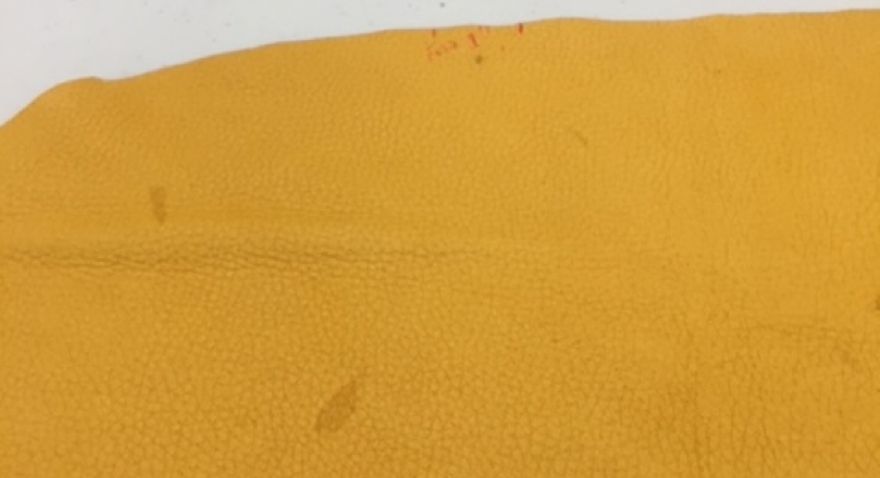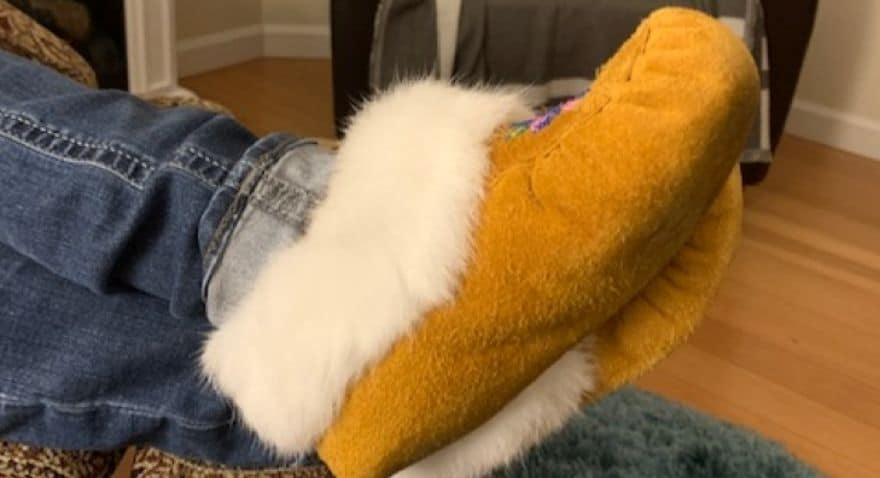
To nurture a shared perspective, it helps to walk a mile in someone else’s shoes. Even better is to make shoes together. The result can be something beautiful.
That was the big takeaway for the team at Meikle Wind after they took part in a moccasin-making workshop led by members of the West Moberly First Nation.
Moccasins Have a Story to Tell
The Peace Region of northern British Columbia is within the traditional territory of Treaty 8 and home to rich customs with deep roots. The First Nation communities in the area have a proud tradition of crafts drawing upon the natural bounty of the land.
The word “moccasin” itself offers a lesson. It originates in the Algonquian language of the Powhatan people of eastern Virginia. English speakers have long used it as a general term for footwear of Indigenous Peoples throughout North America. Of course, a single word fails to capture the rich diversity of traditional footwear. Each region has its own style, shaped by local resources, weather, and patterns of life.
Traditional shoe-making in British Columbia uses materials harvested from elk, native flowers, and other natural resources. The distinctive designs used by local Indigenous communities are tailored to the climate: fur-lined for warmth and durable for our rugged terrain.
Gathering Around the Table
West Moberly First Nation Elder Brenda Seymour, who owns Seemore Kokums Creations in Chetwynd, led the moccasin-making workshop in Tumbler Ridge with fifteen eager students. It was an opportunity for everyone involved to learn something about the art of crafting fine footwear and about the land and the life of Indigenous communities.
Brenda taught the class that the creation of a moccasin depends on an entire community’s contributions. Some group members hunt the elk; some process the hide; some create the sinews for stitching. Only once all the materials have been harvested and prepared can the artisans sit down to make beautiful beaded moccasins.
It is a story of interdependence, sharing, and joy.
David Durrant, Facility Manager at Pattern Canada’s Meikle Wind, took part and shared the story with us. David explains what they learned:
Step One:
“We source everything locally. Elk, the trim, lining, sinew for stitching. What you see is the beginning of stitching a local flower with glass beads.”

Step Two:
“Stitching the wildflower is completed.”

Step Three:
“Stitching together.”

Step Four:
“Adding strength to the stitching.”

“Ready to go.”

The art of making moccasins reflects the collaborative spirit of Tumbler Ridge.
Lessons Learned
To David, the art of making moccasins reflects the collaborative spirit of Tumbler Ridge. When folks join together to support young entrepreneurs and local artisans, everyone involved is enriched. Participants learn a new skill, and ultimately they take steps towards building healthy interdependence.
Pattern Canada and Meikle Wind are proud to have been a small part of making the moccasin workshop come to life. We hope you have enjoyed learning about it as much as we enjoyed being a part of it! If you have questions about our engagement with the Tumbler Ridge community, please feel free to reach out to our team by email at [email protected] and be sure to include “Tumbler Ridge” in the subject line.